 W
WThe Wildlife of Seychelles comprises the flora and fauna of the Seychelles islands off the eastern coast of Africa in the western Indian Ocean.
 W
WThe moths of the Seychelles represent about 275 known species. The moths and butterflies together make up the taxonomic order Lepidoptera.
 W
WAethaloessa calidalis is a moth of the family Crambidae described by Achille Guenée in 1854. It is found throughout the Seychelles, South and South-East Asia, Australia and on many Pacific islands.
 W
WThe Aldabra giant tortoise, from the islands of the Aldabra Atoll in the Seychelles, is one of the largest tortoises in the world. Historically, giant tortoises were found on many of the western Indian Ocean islands, as well as Madagascar, and the fossil record indicates giant tortoises once occurred on every continent and many islands with the exception of Australia and Antarctica. Many of the Indian Ocean species were thought to be driven to extinction by over-exploitation by European sailors, and they were all seemingly extinct by 1840 with the exception of the Aldabran giant tortoise on the island atoll of Aldabra. Although some remnant individuals of A. g. hololissa and A. g. arnoldi may remain in captivity, in recent times, these have all been reduced as subspecies of A. gigantea.
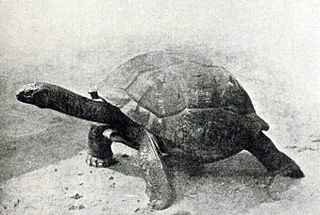 W
WThe Seychelles giant tortoise, also known as the Seychelles domed giant tortoise, is a tortoise subspecies in the genus Aldabrachelys.
 W
WArsina is a monotypic moth genus in the family Erebidae. Its only species, Arsina silenalis is found on the Indian Ocean islands of Réunion, Aldabra and Madagascar. Both the genus and the species were first described by Achille Guenée in 1862.
 W
WAutoba costimacula is a species of moth of the family Erebidae first described by Max Saalmüller in 1880. It is found in southern and eastern Africa, on the islands of the Indian Ocean and in Yemen.
 W
WThe Seychelles butterflyfish is a species of butterflyfish. It is found in the Indian Ocean from eastern Africa east to Cocos-Keeling Islands and Christmas Island, north to Sri Lanka. The Seychelles butterflyfish is found in areas of rich coral growth on seaward reefs, at 10–40 m depth.
 W
WCallyspongia crassa, commonly known as prickly tube-sponge, is a species of sponge found from the Red Sea to Seychelles. Its wide flexible brown tube with exterior protuberances appears single or clusters and reaches up to 50 centimetres (20 in) in size.
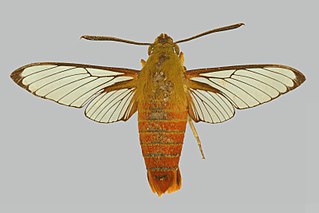 W
WCephonodes tamsi is a moth of the family Sphingidae. It is known from the Seychelles.
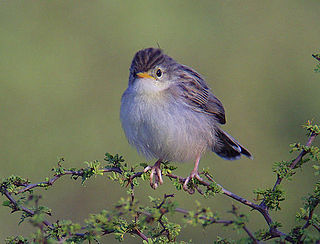 W
WThe Madagascan cisticola is a species of bird in the cisticola family (Cisticolidae), it inhabits in areas to the west of the ˞Indian Ocean. It forms a superspecies with the closely related zitting cisticola and the Socotra cisticola.
 W
WCrocidolomia pavonana is a moth of the family Crambidae. Its caterpillar is a crop pest and is known as the croci or the cabbage cluster caterpillar. This moth is found in Africa and Asia, its range extending from South Africa through India to the Pacific Ocean, including Australia. The wingspan is about 25 mm (1 in). The larvae feed on Brassicaceae species and are considered an agricultural pest on cabbages. At first, they feed only on the undersides of the leaves. Later they feed on the rest of the leaves and the central shoot. The species was first described by Johan Christian Fabricius in 1794.
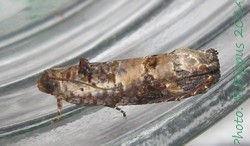 W
WDudua aprobola, the mango flower webworm or litchi leaf roller, is a moth of the family Tortricidae. The species was first described by Edward Meyrick in 1886. It is a pest on several economically important crops.
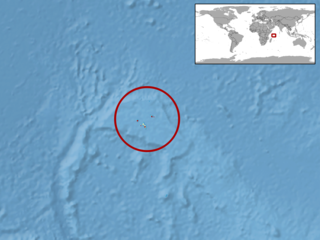 W
WThe dwarf bronze gecko is a species of lizards in the family Gekkonidae endemic to Seychelles.
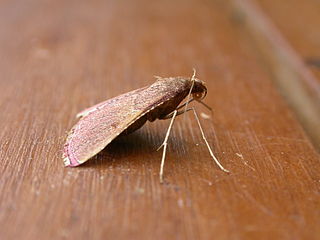 W
WEndotricha mesenterialis is a species of snout moth in the genus Endotricha. It was described by Francis Walker in 1859. It has a wide distribution and is known from Austral Island, Australia, the Kermadec Islands, New Caledonia, New Guinea, Palau, Samoa, Tahiti, Begum Island, Christmas Island, India, Indonesia (Borneo), Malaysia, the New Hebrides, the Nicobar Islands, Sri Lanka, Tonga, Taiwan and China.
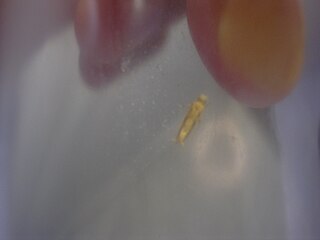 W
WErechthias minuscula, the erechthias clothes moth, is a moth of the family Tineidae. It was first described by Lord Walsingham in 1897. It is widespread and has been recorded from Africa, Sri Lanka, Java, Australia, the Caroline Islands, Fiji, Samoa, the Marquesas, the West Indies, Hawaii and Florida.
 W
WEthmia nigroapicella, commonly known as the kou leafworm, is a moth of the family Depressariidae. It is found in Madagascar, the Seychelles, India, Assam, Burma, Samoa, the Philippines, Hawaii, Taiwan, Japan and Australia.
 W
WEutelia geyeri is a moth of the family Noctuidae first described by Rudolf Felder and Alois Friedrich Rogenhofer in 1874. This species is found in India, Sri Lanka, China and Japan, as well as from Africa, where its presence had been reported from Lesotho and Seychelles.
 W
WThe giant bronze gecko is a species of lizard in the family Gekkonidae endemic to Seychelles.
 W
WGracilodes nysa is a species of moth in the family Erebidae. The species is found in Africa, from Uganda and Kenya to South Africa and on the islands of the Indian Ocean, in Mauritius, Réunion, Madagascar, Seychelles and Comores.
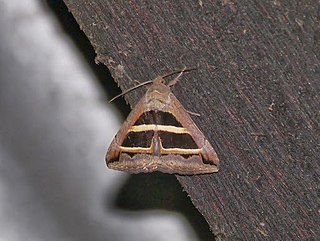 W
WGrammodes bifasciata is a moth of the family Erebidae first described by Vincenzo Petagna in 1787. It is found in Madagascar, eastern Africa, North Africa and other parts of the Mediterranean Basin, including south of France and Israel.
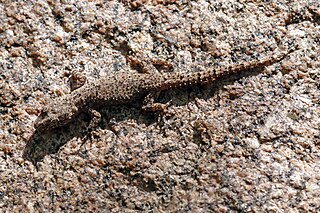 W
WHemidactylus mercatorius is a species of gecko. There has been confusion between this species and Hemidactylus mabouia, making it difficult to establish the ranges of these species. While the Reptile Database gives Hemidactylus mercatorius a wide distribution in eastern Africa, the IUCN restricts its native distribution to Madagascar and some other islands in the Indian Ocean.
 W
WHerpetogramma licarsisalis, the grass webworm or tropical grass webworm, is a moth of the family Crambidae. It is native to most of the old world tropics, including New Zealand, Hong Kong and Queensland. It is an introduced species in many other parts of the world, including Hawaii and the Canary Islands.
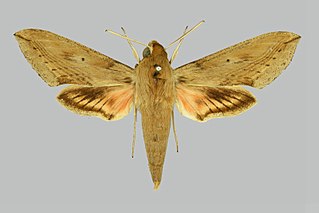 W
WHippotion isis is a moth of the family Sphingidae. It is known from Mauritius.
 W
WHymenoptychis sordida, the pneumatophore moth, is a moth of the family Crambidae. The species was first described by Philipp Christoph Zeller in 1852. It is known from Australia, southern and South-East Asia, several Pacific islands, Seychelles, South Africa, Madagascar and the United Arab Emirates.
 W
WLobesia vanillana is a moth of the family Tortricidae. It was described in 1900 by Joseph de Joannis from five males and one female from Réunion island. It is found in Réunion, Aldabra atoll, Picard Island, Madagascar, Kenya and Nigeria.
 W
WThe Madagascar girdled lizard or Madagascar plated lizard is a species of lizard in the family Gerrhosauridae. It is found in Madagascar, some outlying islands and the Seychelles (Cosmoledo). This generally common lizard is found in a range of habitat types, including open and degraded humid forest at mid and low altitudes. It also occurs in plantations. On Cosmoledo, it occurs in open shrubland. This oviparous lizard grows to 30 cm (12 in) total length.
 W
WMahé day gecko is a diurnal subspecies of geckos. It lives on the western granite islands of the Seychelles and typically inhabits trees and human dwellings. The Seychelles giant day gecko feeds on insects and nectar.
 W
WMaruca vitrata is a pantropical insect pest of leguminous crops like pigeon pea, cowpea, mung bean and soybean. Its common names include the maruca pod borer, bean pod borer, soybean pod borer, mung moth, and the legume pod borer. The species was first described by Johan Christian Fabricius in 1787.
 W
WMicrocrambon is a monotypic moth genus of the family Crambidae described by Stanisław Błeszyński in 1970. Its single species, Microcrambon paphiellus, described by Achille Guenée in 1862, is endemic to Réunion and Seychelles.
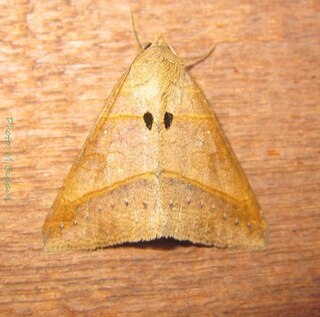 W
WMocis conveniens, the pale brown lines, is a moth of the family Erebidae.
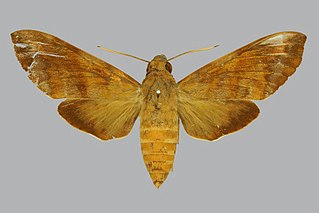 W
WNephele leighi is a moth of the family Sphingidae. It is known from the Seychelles.
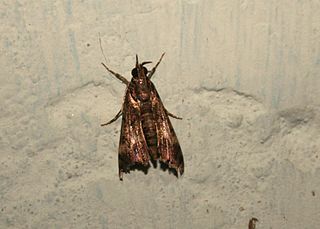 W
WNoorda blitealis is a species of moth of the family Crambidae. It is found in subtropical Africa, south of the Sahara and in Australasia.
 W
WNotarcha quaternalis is a species of moth of the family Crambidae. It can be found throughout subtropical Africa including many islands of the Indian Ocean.
 W
WNycteola mauritia is a species of moth in the family Nolidae. It occurs only on some islands in the Indian Ocean, as Madagascar, Seychelles, Mauritius and Réunion.
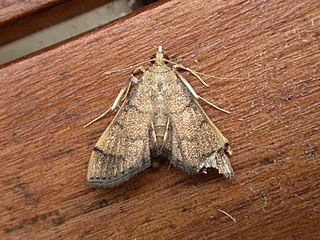 W
WOmiodes indicata, the bean-leaf webworm moth or soybean leaf folder, is a species of moth of the family Crambidae. It is found from Florida to Texas, the West Indies and Mexico to South America, Cameroon, the Comoros, the Democratic Republic of Congo, La Réunion, Madagascar, Mauritius, Nigeria, Saudi Arabia, the Seychelles, South Africa, India, Borneo and Australia (Queensland).
 W
WPhazaca theclata, the cotton leaf roller, is a moth of the family Uraniidae. It was first described by Achille Guenée in 1858. It is known from Africa south of the Sahara, from Saudi Arabia, as well as from India, Japan, Myanmar, Nepal and Sri Lanka.
 W
WPhelsuma is a large genus of geckos in the family Gekkonidae. Species in the genus Phelsuma are commonly referred to as day geckos.
Phelsuma abbotti, commonly known as Abbott's day gecko, Aldabra day gecko, or Assumption day gecko, is a species of lizard in the family Gekkonidae.
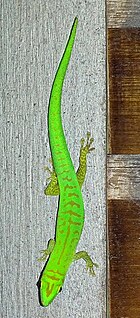 W
WPhelsuma astriata astriata is a subspecies of Seychelles small day gecko. It is a small, slender lizard with bright green colour that feeds primarily on insects. It is found on several islands of the Seychelles.
 W
WRivula dimorpha is a moth of the family Noctuidae. It is found in the Seychelles on Mahé and Silhouette islands and in La Réunion.
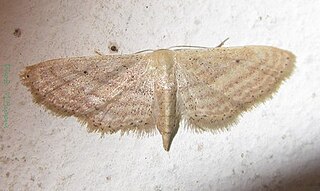 W
WScopula serena is a moth of the family Geometridae. It is found in Africa south of the Sahara, from Sierra Leone to Tanzania and to South Africa, as well as on the Indian Ocean islands
 W
WThe Seychelles bronze gecko is a species of lizard in the family Gekkonidae endemic to Seychelles.
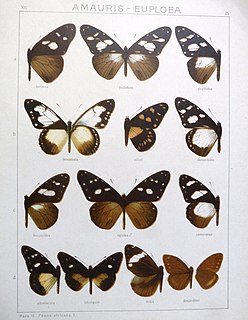 W
WThe Seychelles crow is a species of nymphalid butterfly in the Danainae subfamily. It is endemic to the Seychelles, where it is only found on the islands of Mahe and Silhouette.
 W
WSeychelles giant day gecko is diurnal subspecies of geckos. It lives on the island Praslin in the Seychelles and typically inhabits trees and dwellings. The Seychelles giant day gecko feeds on insects and nectar.
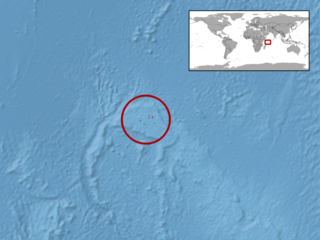 W
WThe Seychelles sucker-tailed gecko or Seychelles surprise gecko is a species of lizard in the family Gekkonidae. It is endemic to Seychelles.
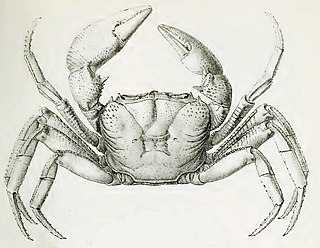 W
WSeychellum alluaudi is a species of freshwater crab endemic to the Seychelles, and the only true freshwater crab in that country. It lives in rainforest streams on the archipelago's granitic high islands. Although it may be abundant, little is known about its biology. If its habitat were to decline in quality, S. alluaudi might become endangered, but it is currently listed as Vulnerable on the IUCN Red List.
 W
WThe leafscale gulper shark is a dogfish of the family Centrophoridae. C. squamosus is reported to have a lifespan of approximately 70 years, based on otolith ring counts. It was the first described species in the genus Centrophorus, which now contains 13 species.
 W
WThe Seychelles gulper shark is a species of fish in the family Centrophoridae found in Alphonse island in Seychelles. This species is distinguished by having large tip of snout to first dorsal distance of 34% TL; first dorsal fin high ; second dorsal fin base long ; long snout ; uniformly grey with tip and the trailing edge of dorsal fins blackish. It is one of 11 described species in the genus Centrophorus.
 W
WThe Seychelles frogs (Sooglossidae) are a family of frogs found on the Seychelles Islands. Until recently, this family was believed to include the genera Sechellophryne, Nesomantis and Sooglossus, but following a major revision of amphibians in 2006, the genus Nesomantis was named a junior synonym of Sooglossus. Their closest relatives are the purple frogs (Nasikabatrachidae) of India.
 W
WStemorrhages sericea, the large emerald pearl, is a moth of the subfamily of Spilomelinae within the family Crambidae. It lives throughout Africa south of the Sahara, and the Indian Ocean islands of Réunion, Madagascar, Mauritius and the Comoros.
 W
WTemnora peckoveri is a moth of the family Sphingidae. It is known from Madagascar.
 W
WUtetheisa lactea is a moth of the family Erebidae. It was described by Arthur Gardiner Butler in 1884 and is found in the Seychelles.
 W
WUtetheisa lotrix, the salt-and-pepper moth or crotalaria moth, is a moth of the family Erebidae. The species was first described by Pieter Cramer in 1777. It is found in most of the Old World tropics.
 W
WUtetheisa pulchelloides, the heliotrope moth, is a moth of the family Erebidae. It is found in the Indo-Australian region including Borneo, Hong Kong, New Zealand, Papua, Seychelles and most of Australia. The species was first described by George Hampson in 1907.